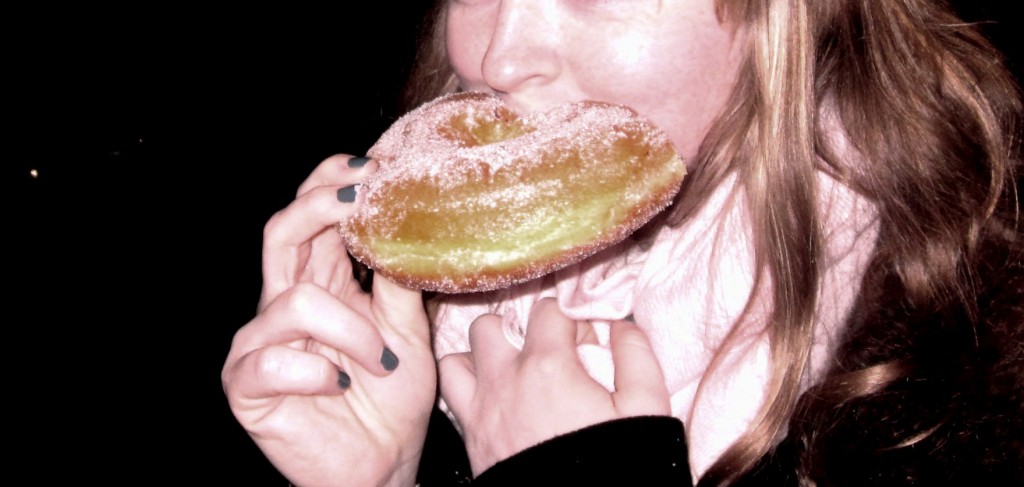There is no doubt the people of Spain love to have a good time. While living there, I was surprised at just how often there were festivals and feasts that trumped professional obligations. Don’t worry, though; you’ll find it is easier to give up your laptop and office space than you might think.
Many holidays and festivals are celebrated nationally, though will vary by region. Some festivals are entirely unique to their geographic region and the specific culture of that region. Parties happen year-round, but I would suggest heading over to the Iberian Peninsula in the spring, when you’ll hit the major events and get perfect weather. This is one of my favorite things about the Spanish people–traditions are upheld every year, and all ages and newcomers are included and welcome. Besides, who really needs a reason to have a good time? Some of the better-known festivals are as follows:
Carnaval: The dates vary from year to year, but it is always around February or March before Lent begins. This is a weeklong party for costumes, booze and getting all of your bad habits in in copious amounts before giving them up for lent. Carnaval is recognized all over and most celebrate more traditionally and with less debauchery, but if you’re in the south, Cádiz is the place to be. The city buzzes all day every day during Carnaval, and even before and after. Chirigotas, costumed groups who sing satirical songs about the government, can be heard for weeks leading up to Carnaval, as well as after it is over. As each day wears on, the streets become littered with confetti and bottles, lost cell phones and house keys and pieces of costumes. Each night. city workers clean up to start fresh again the next day. You’ll come across men dressed as nuns, women dressed as pirates and some dressed as trashcans or musketeers. It’s Halloween taken to the extreme–the whole city is in the streets, and everybody has a good time.

Las Fallas: Just before Saint Joseph’s day in March in Valencia, on Spain’s East coast. Each neighborhood will usually create some kind of large puppet structure. These are sometimes of a satirical nature, much like the Chirigotas of Carnaval. These puppets get burned in a huge bonfires accompanied by a botellón (drinking in the streets). It’s like watching a Disneyland parade on fire.

Semana Santa: The week leading up to Easter is a stark contrast to Carnaval. Semana Santa (Holy Week) is an exceptionally important religious week for the people of Spain. Processions fill the streets, accompanied by persons in robes, hoods and other traditional religious dress. The processions (pasos) are life-sized figures of the Virgin Mary, Jesus or saints in different biblical scenes on wooden platforms. These artistic marvels are carried on the backs of men that carry the weight along winding routes to the cathedrals. The smell of incense lingers in the air, and historical religious symbols are all around. It is truly a sight to see, even for those that are not of the Catholic faith. Sevilla is a great place to get a sense of the importance of this week, and the dedication with which the Spanish people fulfill the traditions each year. Although, almost anywhere you go there will be impressive processions. Make sure that if you want to see the processions you stake out a viewpoint early on, as the streets will be packed with people once it begins.

La Feria de Abril: About two weeks afterwards, Semana Santa Sevilla has La Feria. Originally a cattle fair, it has evolved into an event about five days long, during which time all things Andalucía are celebrated: bull fighting, flamenco (specifically Sevillanas, Sevilla’s specific style of the dance), horses, and quality libations. Women wear flamenco dresses, horses pull carriages, and fancy lights illuminate the night. What better way to lighten the mood after Semana Santa? Things are happening day and night; more traditional, family-friendly events during the day, and fun of a more indulgent kind at night. Banks of booths rented by prominent families and businesses offer places to view the events and give the whole festival a real fair feeling.

Running of the Bulls: July 7th is the first running of the bulls during the nine-day Fiesta San Fermin in Pamplona. The bulls are running to the bullring from their holding pens. At the bullring they will face the matadors and inevitable death. Bull fighting is a hotly-contested issue: deeply Spanish, yet cruel. Those that run in front of these bulls were historically boys from the village, interested in proving their bravery. It is still a sport for the nimble footed, as the last death was as recent as 2009. The festival is a celebration of music and culture, including parades, sports, and fireworks that draws hundreds of thousands.
La Tomatina: In Buñol, Valencia, the last Wednesday of August is the day for tomato throwing. The origin of the event is debated, but today, the city allows the event every year and actually provides truck fulls of tomatoes grown just for this day. There are rules, however, and goggles are recommended! Rules include smashing tomatoes before throwing them, throwing only tomatoes, and to cease throwing after exactly one hour at which time fire trucks begin hosing down the streets. Interestingly, the streets are said to gleam after the Tomatina, since the acidic tomato juice really takes off the grime.

So here is a taste of the more popular celebrations in Spain. Stay tuned for a look at the smaller festivals held throughout the nation.

